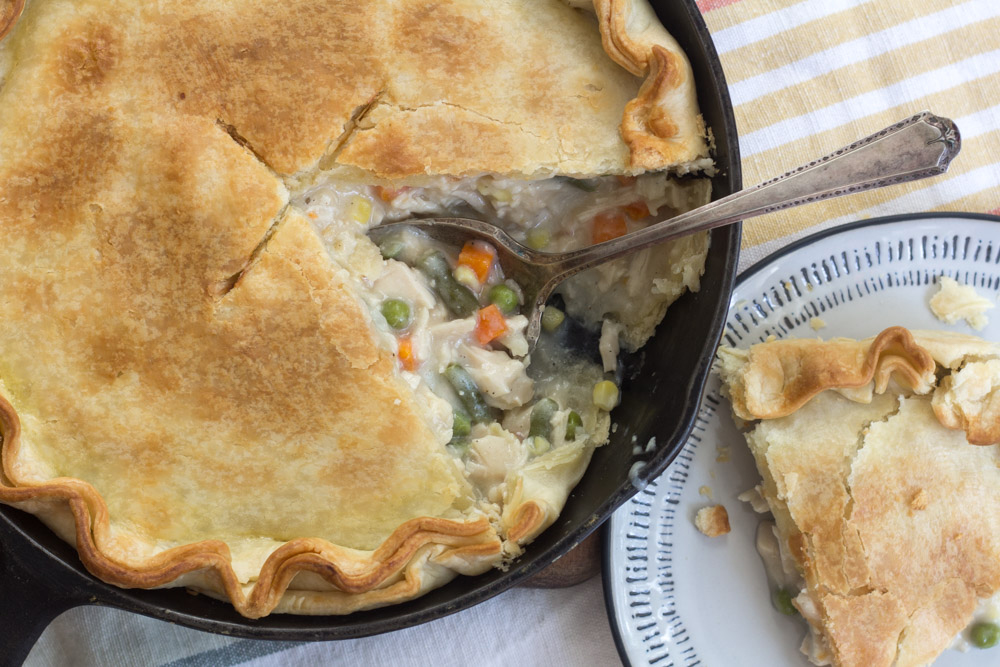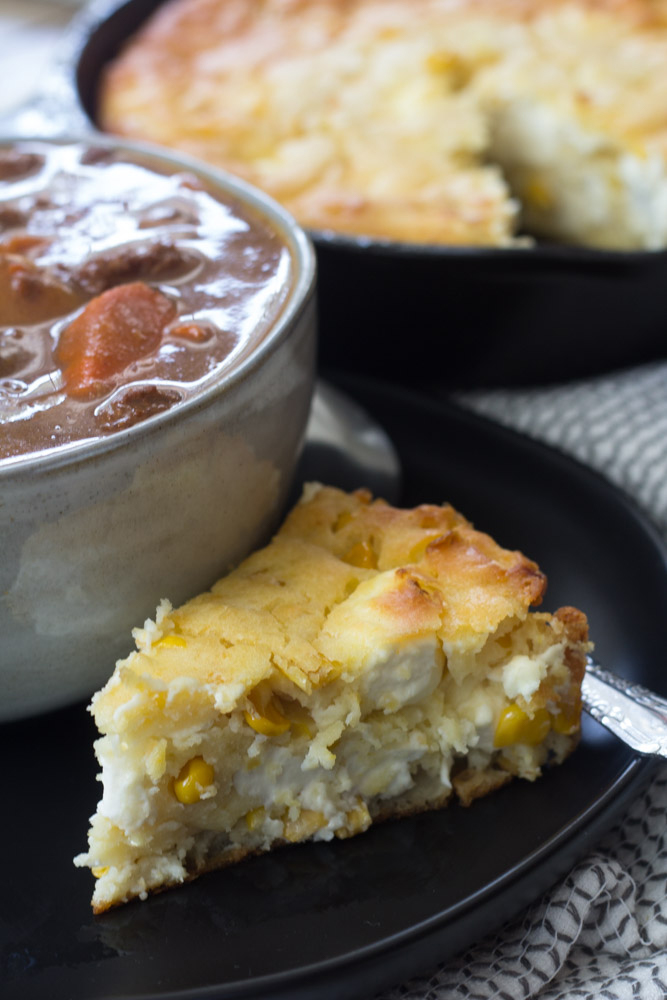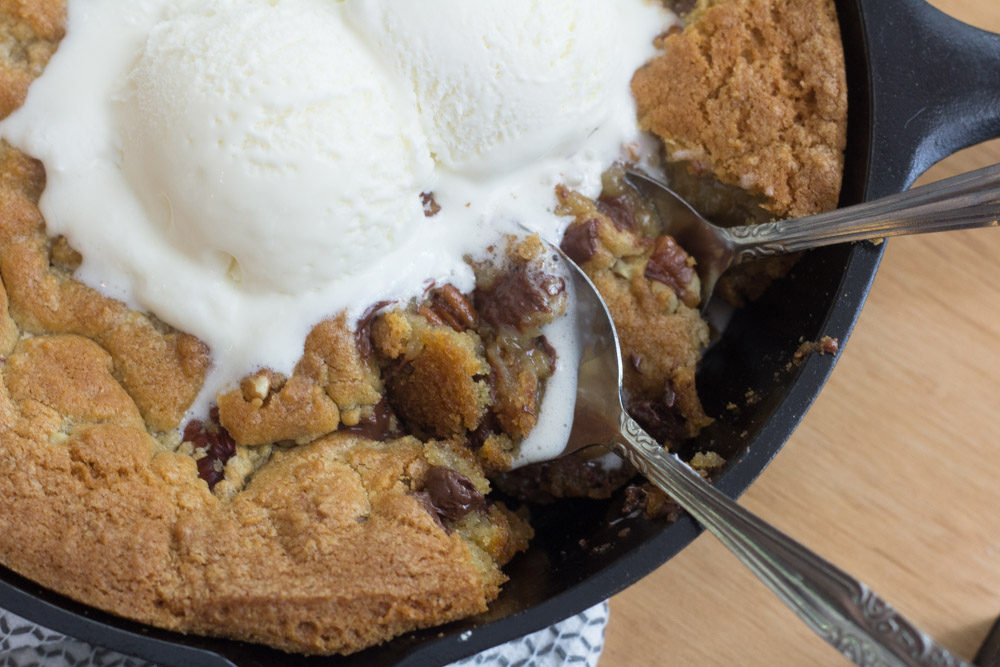By Jennifer Kornegay

Styling/Photos by Brooke Echols
Cast-iron cookware was created several hundred years ago and got heavy use in the 1700s and 1800s. In the 20th century, pots and pans made from other materials like aluminum began to edge it out, pushing it to the dark confines of the back cabinets where unloved and unused kitchen tools languish.
But it’s made its way back. Cast iron has enjoyed a surge in popularity in recent years and is now the go-to cookware for many chefs and home cooks who put more modern pieces aside in favor of the tried-and-true staple.
Need proof? Lodge, the largest U.S. manufacturer of cast iron, founded in 1896, says the last few years have brought some of the best sales in the company’s century-plus history. And there are new cast-iron makers like Smithey Ironware and Butter Pat Industries jumping into the market. Want evidence that its fanbase is still growing? There’s an entire magazine devoted to cast-iron cooking.
So how has cast iron’s appeal endured and why is it now thriving? There are multiple reasons. It’s almost indestructible; rust is its only true enemy. It’s naturally nonstick, so there are no health concerns about chemical coatings. It’s an excellent conductor of heat, and it heats evenly, making it highly versatile and good for all kinds of recipes, delivering good sears on meat, better browning on cornbread and extra crisping to the crust on fried chicken. While some of the newer, smaller cast iron companies charge a pretty penny for their pieces (and they’re worth it; there’s a lot of skill going into them), most cast iron is still very reasonably priced.
Cook of the Month: Suzy Shephred, Pioneer EC

Suzy Shepherd felt the need to share her recipe for Cream Cheese Cornbread to encourage folks to use their cast iron skillets and branch out beyond basic cornbread. “I use my cast-iron skillet for so many things, but I never make any version of cornbread in anything else,” she says. “And this cornbread is a bit different and so delicious.” It’s a recipe she created on a whim, modifying other cream cheese cornbread recipes she’d seen by leaving the cream cheese in chunks. “That gives it such a great texture,” she says. She was thrilled to find out she is this issue’s Cook of the Month, but we don’t think she should have been too surprised. She entered the recipe in another contest years ago, and it took home first prize.

Cream Cheese Cornbread
1 cup self-rising flour
½ cup cooking oil
1 8-ounce package cream cheese (keep cold)
1 14-ounce can cream corn
2 whole eggs, beaten
Preheat oven to 375 degrees. Add 2 tablespoons oil to a cast iron skillet and heat until hot on top of stove. In a large bowl, mix all ingredients together except cream cheese (keep cold until ready to use.) Cut cold cream cheese into small squares and fold into mixture. Pour into hot skillet, turn off heat and leave on top of stove a few minutes, then place in hot oven and bake 20-25 minutes or until golden brown. Great served with soups.
Iron Skillet Peach Pie
6 large peaches, peeled and sliced
1¼ cup sugar
½ teaspoon lemon zest
2 tablespoons fresh lemon juice
½ teaspoon vanilla flavoring
½ teaspoon almond flavoring
3 frozen regular Pet-Ritz pie shells
¾ cup butter
½ cup brown sugar
Cinnamon, to taste
Pre-heat oven to 350 degrees. Place peaches in a large bowl. Add 1 cup sugar, zest, lemon juice and flavorings. Stir gently to combine. Melt ½ cup butter in iron skillet, add brown sugar and stir. Top mixture with one pie shell. Add half of the peach mixture and sprinkle with cinnamon. Top with second pie shell. Add remaining peaches and sprinkle with cinnamon. Make several slits in last pie shell and carefully top peaches. Pour remaining ¼ cup butter on pie shell, using a brush to distribute evenly. Sprinkle with ¼ cup sugar. Bake for 60 minutes. Serve warm with vanilla ice cream.
Wanda Stinson, Pioneer EC
Broccoli and Kielbasa
1 link kielbasa, thinly sliced
5 cloves garlic, minced
Large bunch broccoli (without stems), chopped
1 cup onions, red, white or shallots
1 teaspoon paprika
Salt and pepper, to taste
2 tablespoons red wine vinegar
6 tablespoons butter, olive oil or ghee, divided
Melt 3 tablespoons butter in a cast iron skillet over medium heat. Add the shallots and sauté until caramelized; then add garlic and cook until soft. Add the red wine vinegar to the pan and mix with shallots and garlic. Add kielbasa and sauté until brown. Add the remaining butter, broccoli, paprika, salt and pepper and toss to mix all ingredients and coat the broccoli with butter and seasonings. Sauté the broccoli, add a splash of water and put a lid on the pan. Cook until the broccoli is soft, stirring occasionally. Top with fresh parsley and red pepper flakes if you like a little heat.
Jana Baron, Baldwin EMC
Cajun Shrimp (cover photo)
1 tablespoon olive oil, divided
½ onion, chopped (about 1 cup)
2 cloves garlic, minced
2 serrano peppers, chopped
2 stalks celery, chopped
1½ pounds shrimp, peeled and
deveined
2 teaspoons Cajun seasoning
Salt and pepper, to taste
1 tablespoon lemon juice
1 tablespoon fresh parsley, chopped
In a large skillet, heat ½ tablespoon olive oil over medium heat. Sauté onion, serrano pepper and celery until tender, about 5 minutes. Stir in garlic and cook for 1 more minute. Transfer vegetables to a bowl. Add remaining olive oil to the pan. Add shrimp in a single layer and season with salt, pepper and Cajun seasoning. Cook until no longer pink, 1-2 minutes per side. Add vegetables and lemon juice and toss until combined. Garnish with chopped parsley.
Staff contribution
Chocolate Chip Blondie

1 cup butter or margarine, melted
1 cup white granulated sugar
1 cup light brown sugar
2 eggs
2 teaspoons vanilla extract
3 cups all-purpose flour
11/2 teaspoons baking soda
1/2 teaspoon salt
1 cup milk chocolate chips
1 cup pecans
Cool Whip or ice cream for serving
Preheat oven to 350 degrees. Coat iron skillet well with cooking spray. Mix melted butter with white and brown sugars. Add eggs and vanilla and mix together with butter and sugars. Then add flour, baking soda and salt. Fold in chocolate chips and pecans. Pour mixture into cast iron skillet and cook 35 to 40 mins. May serve warm with ice cream of choice or serve cool with Cool Whip.
Michelle Rogers, Franklin EC
Flat Iron Skillet Buttermilk Biscuits
2 cups White Lily self-rising flour
1 teaspoon sugar
1 stick cold butter (not margarine), grated or cut into small pieces
1 cup cold buttermilk
Preheat oven to 400 degrees. Generously grease your flat iron skillet with butter flavored Crisco or lard. Place skillet in oven and heat approximately 12 minutes while mixing your biscuits. You will get a soft buttery texture on the inside and crisp bottom from the hot skillet. Mix flour and sugar. Use your fingers to work the butter into the flour. Don’t overmix. You want some butter pieces throughout your biscuit. With a wooden spoon, start in the center of mixing bowl gradually pouring in the buttermilk until the dough comes together from edges of bowl. The dough should be slightly sticky but well formed. Remove skillet from oven (be careful, it’s hot). Dump the dough onto a floured pastry board; knead gently 3 times. Press the dough to 1-inch thickness. Cut the dough with a biscuit cutter into 8 biscuits, placing each biscuit 1-inch apart on the hot skillet (hear the sizzle). Bake at 400 degrees 20-24 minutes until golden brown. Split and slather with tomato gravy or your favorite preserves.
Jackie Skelton Vice, Black Warrior EMC
Classic Chicken Pot Pie
2 refrigerated pie crusts, softened
1/3 cup butter (unsalted)
1/3 cup onion (finely chopped)
1/3 cup all-purpose flour
1/4 teaspoon salt
1/4 teaspoon pepper
1 14-ounce can chicken broth
1/2 cup milk
21/2 cups shredded rotisserie chicken
2 cups frozen mixed vegetables, cooked as directed on package
Place one pie crust into 10-inch cast iron skillet and reserve second crust to put on top of pie. Heat oven to 375 degrees. In a 2-quart saucepan melt butter over medium heat. Add onions and cook 2 minutes stirring frequently until tender. Stir in flour, salt and pepper until well blended. Gradually stir in broth and milk, cooking and stirring until bubbly and thickened. Stir in chicken and mixed vegetables. Remove from heat. Spoon into crust-lined, 10-inch cast iron skillet. Top with second crust; seal edge and flute. Cut slits in several places in top crust. Bake 30 to 40 minutes or until crust is golden brown. During the last 15 to 20 minutes of baking, cover the edge of the crust with foil to prevent excessive browning. Let rest 5 minutes before serving.
Linda Jo Letson, North Alabama EC
New England Boiled Dinner
3 to 4 pounds corned beef brisket
8 small onions
8 medium carrots
4 potatoes, pared and halved or quartered
2 turnips cubed (optional)
1 medium green cabbage, cut into wedges
Caraway seed
Place brisket in large cast iron kettle. Cover with cold water. Cover tightly and simmer 3 1/2 hours or until tender. Skim fat from liquid. Add onions, carrots, potatoes and turnips. Sprinkle with caraway seed. Cover. Simmer 20 minutes. Remove meat to warm platter. Add cabbage to kettle; simmer uncovered 10 to 15 minutes longer or until vegetables are tender. Serves 8. Note: To carve meat, cut thin diagonal slices across the grain at a slanting angle.
Janice Bracewell, Covington EC
How to: Re-season your cast iron

Seasoning refers to a layer of fat that’s baked onto the interior surface of cast-iron cookware and is what makes pieces non-stick. Most cast-iron pieces made today come already seasoned, but over time, they need to be re-seasoned to keep them in good working order.
Here’s how to do it:
- Use a bit of the fine steel wool and warm water to rub iff any rust.
- Dry it completely and spread a thin layer of vegetable oil or shortening around the inside with a paper towel.
- Place it upside won in your oven and bake at 350 degrees for about an hour. (Put a sheet pan covered in foil underneath it to catch grease drips.
- Le tit cool to room temperature in the oven.
$50 prize and title of Cook of the Month
Themes and Deadlines:
January: Soups and Stews | October 11
February: Pork | November 8
March: Peanut Butter | December 13
Please send us your original recipes (developed or adapted by your family or family members.) Cook of the Month winners will receive $50, and may win “Cook of the Month” only once per calendar year.
3 ways to submit:
Online: alabamaliving.coop
Email: [email protected]
Mail: Recipes, P.O. Box 244014, Montgomery, AL 36124
To be eligible, submissions must include a name, phone number, mailing address and co-op name.
Alabama Living reserves the right to reprint recipes in our other publications.




